Attorney General James, The Legal Aid Society, and NYCLU Announce Agreement with NYPD to Reform Policing of Protests
NYPD Required to Change its Response to Protests in New York City, Stop ‘Kettling’ and Other Excessive Use of Force Practices, and Improve Treatment of Members of the Press
Settlement Resolves AG, Legal Aid, NYCLU, and Private Lawsuits Against NYPD for its Response to 2020 Racial Justice Protests
NEW YORK – New York Attorney General Letitia James, The Legal Aid Society (LAS), and the New York Civil Liberties Union (NYCLU) today announced a landmark agreement with the New York City Police Department (NYPD) that significantly reforms NYPD’s policing of protests to protect the public and members of the press from excessive use of force. Today’s agreement resolves lawsuits filed by Attorney General James, LAS, NYCLU, and other private plaintiffs over NYPD’s wrongful arrests and excessive use of force against protesters during the summer of 2020. As a result of today’s agreement, NYPD will be required to change how it deploys officers to public demonstrations to allow New Yorkers to exercise their First Amendment rights free from intimidation or violence.
The centerpiece of the reforms is a new, four-tiered response system that will dictate how NYPD responds to protests, with the primary goal of protecting the rights of protesters. The tiered system will minimize police presence at protests and require NYPD to use de-escalation methods before increasing its response. The system allows for increased NYPD presence and response if protests block major traffic arteries, if protesters engage in unlawful conduct, or in other instances that could compromise public safety.
Additionally, the agreement requires NYPD to create a new, senior role within the department to oversee response to all public demonstrations. The agreement will also require NYPD to stop its use of the crowd-control tactic known as “kettling,” amend its internal discipline matrix, and improve treatment of members of the press.
To ensure accountability, a new collaborative oversight committee will review NYPD’s response to public demonstrations over a multi-year period. The agreement requires New York City to provide $1.625 million in funding to the New York City Department of Investigation (DOI) and $1.45 million to support plaintiffs’ work during the oversight committee process.
“The right to peacefully assemble and protest is sacrosanct and foundational to our democracy. Too often peaceful protesters have been met with force that has harmed innocent New Yorkers simply trying to exercise their rights,” said Attorney General James. “Today’s agreement will meaningfully change how the NYPD engages with and responds to public demonstrations in New York City. As the Attorney General, it is my duty to protect New Yorkers’ rights and this agreement will ensure that peaceful protesters can make their voices heard without fear, intimidation, or harm.”
“Today’s settlement represents a novel approach to policing protests that, if implemented faithfully by the NYPD, will ensure that protesters are never again met with the sort of indiscriminate violence and retaliatory over-policing New York saw in the summer of 2020,” said Corey Stoughton, attorney-in-charge of the Criminal Defense Practice’s Special Litigation Unit at The Legal Aid Society. “We look forward to seeing these reforms unfold and will hold both the City and the NYPD accountable should the Department and individual officers fail to adhere to these new and needed practices.”
“This landmark settlement holds the NYPD, the nation’s largest and most influential police force, to its oath to protect New Yorkers’ right to protest,” said Molly Biklen, deputy legal director of the New York Civil Liberties Union. “The NYPD’s violent response to protestors during the 2020 demonstrations for Black lives made clear to the world what too many New Yorkers already knew, that the NYPD is unable or unwilling to police itself. Today’s settlement ensures the NYPD can no longer indiscriminately deploy the notorious Strategic Response Group to protests and no longer escalate force on a whim.”
In 2020, Attorney General James held a three-day public hearing on NYPD’s response to public protests and later released a preliminary report on the findings from the hearing. In 2021, Attorney General James filed a lawsuit against NYPD for its pattern of using excessive force and making false arrests against New Yorkers during peaceful protests. In October 2020, LAS and NYCLU also sued New York City and NYPD for its excessive use of force during protests in 2020 over the unjust killing of George Floyd. Two private lawsuits, Rolon v. City of New York and Gray v. City of New York, were also filed against NYPD for its excessive use of force against private citizens and members of the press respectively. Today’s agreement resolves those lawsuits and requires NYPD to make a series of reforms to how it responds to and interacts with public demonstrations.
Overview of Reforms
Creation of a New Senior Executive Role to Oversee NYPD Response
As part of today’s agreement, NYPD must create a new senior-level role within the department to oversee all protest-related activities. The new First Amendment Activity (FAA) Senior Executive, who will have the rank of at least Deputy Chief, will be responsible for overseeing and developing all policies, procedures, and police officer trainings consistent with this agreement. In addition, the FAA Senior Executive will be responsible for leading the department’s response to all New York City protests and must lead after-action reports, a new requirement that will document how NYPD responded to a public demonstration, who was the incident commander deployed to the demonstration, and why certain decisions were taken.
Tiered Response
Using a new tiered response system, New York City protests will have varied levels of police presence depending on the size, scale, and conditions at a protest. The NYPD’s default response to a protest cannot be a large deployment of officers. At each tier, deployed officers have an obligation to attempt de-escalation techniques with the goal of facilitating the First Amendment rights of protesters.
Tier One
In Tier One, NYPD may deploy specially qualified protest liaisons from NYPD’s Community Affairs Bureau whose primary role is to communicate with protesters and help facilitate the protest. The protest liaisons will receive training on effective communication with protestors, de-escalation, and crowd psychology.
In this tier and in all the tiers, NYPD may deploy patrol officers to reroute vehicle or pedestrian traffic to help facilitate the protest. These patrol officers cannot be drawn from NYPD Strategic Response Group (SRG) and shall not carry equipment associated exclusively with those units.
Tier Two
The NYPD may move to Tier Two if the commander in charge of the protest, in consultation with the FAA Senior Executive, believes that certain criminal activity, such as burglary, larceny, or assault are imminent but have not yet occurred or there is a serious risk that the crowd size would obstruct critical infrastructure. In Tier Two, NYPD will dispatch protest liaisons to the protest and may station additional officers nearby but out of sight of the protest. If dynamics at the protest change, NYPD may move back to Tier One as determined by the commander in charge and the FAA Senior Executive.
Tier Three
The NYPD may move to Tier Three if there is individualized probable cause for arrest. For certain lower-level offenses, arrests can only be authorized by more senior officers holding at least the rank of Captain. In this tier, the NYPD may deploy an appropriate number of officers to address the specific individuals engaged in unlawful conduct. The Incident Commander must authorize the implementation of Tier Three and may authorize return to Tier One or Two if the conditions at the protest have changed.
Tier Four
The NYPD may move to Tier Four if protesters are seeking to gain unauthorized entry, or physically blocking others’ entry into a sensitive location, such as a hospital, or individuals are engaged in widespread criminal conduct that cannot be addressed by targeted arrests. In this tier, the Incident Commander may move to disperse the protest if approved and directed by the FAA Senior Executive. Dispersal orders must be audible to the entire crowd, clearly identify exit points, and whenever possible, direct protesters to where they may continue to lawfully protest. The NYPD must document the specific basis for the decision to disperse a protest.
Use of Force
Today’s agreement requires NYPD to change its practices around encirclement of protesters to protect New Yorkers from unjustified arrests and excessive use of force. The NYPD can only encircle an individual or individuals within a crowd who are the target of a particular arrest. If any other individuals are inadvertently or mistakenly encircled, they must be allowed to exit the encirclement formation immediately, and officers must help facilitate those individuals’ exit. The agreement makes clear that NYPD cannot engage in “kettling,” the practice of enclosing individuals with an intent to take police action against them without having individualized probable cause.
In addition, NYPD, including its Aviation Unit, cannot deploy helicopters with the intent of intimidation or the intent of disrupting, interfering with, or dispersing a lawful protest.
In the event that NYPD must establish a Mass Arrest Processing Center (MAPC), the new FAA Senior Executive or their designee must authorize its establishment. The agreement requires the NYPD to ensure MAPC’s location and contact information are readily available to the public via the NYPD’s social media accounts. In addition, the NYPD must provide all people held at the MAPC clean water, food (if held for more than two hours), personal protective equipment (PPE), prompt access to telephones, adequate medical care, and restrooms.
Treatment of Members of the Press
As a result of today’s agreement, the NYPD must improve its treatment of members of the press and improve reporters’ access to a protest to be able to record and report. The NYPD must update its trainings and Administrative Guide to explicitly acknowledge that there is a clearly established right under the First Amendment to record police activity in public.
The agreement states that NYPD officers cannot prohibit or restrict the press’s right to observe and record a protest, including by putting up crime scene tape for the sole purpose of preventing members of the press from viewing the scene. The NYPD also cannot arrest a member of the press or public solely for observing or recording police activity in a public place. If there is an order by the NYPD to leave an area, press pass holders are not required to leave the area but can move to a safe location.
To ensure that NYPD is effectively complying with these terms, NYPD agrees to participate in meetings at least twice per year to discuss any problems related to the press and newsgathering activities, and to allow representatives of the press to make any recommendations with respect to related policies and practices.
Oversight
An oversight committee comprised of the Office of the Attorney General (OAG), the Commissioner of DOI, New York City Office of Corporation Counsel, the new FAA Senior Executive, and two representatives from LAS, NYCLU, and the private cases will oversee and monitor NYPD’s implementation and compliance with the new reforms over a multi-year period.
In phase one, NYPD must begin changing its trainings and policies to comply with the terms of the agreement, including the four-tiered response system, arrest policies, use of force at public demonstrations, and treatment of members of the press.
Starting in phase two of the oversight period, the committee will meet regularly to review and evaluate NYPD’s response to protests. Every six months, DOI will conduct an in-depth review of two protests and make recommendations to NYPD. In addition, DOI must also publicly issue two progress reports summarizing their review of the NYPD’s response to protests. As part of today’s agreement, New York City will provide $1.625 million in funding to DOI to hire additional full-time DOI staff to fulfill its role on the oversight committee. New York City will also provide $1.45 million to plaintiffs’ attorneys on the oversight committee to conduct their work, including the hiring of a community outreach expert who will be responsible for engaging affected communities, including grassroots organizations, legal organizations, press organizations and legal observers, and ensuring that community input is incorporated.
In phase three of the oversight period, the court will retain jurisdiction over the agreement for an additional 12 months, and if at any time during phase three the NYPD violates the terms of the agreement, OAG or the other plaintiffs may take action to bring the matter back to court.
This matter was led by Assistant Attorney General Lillian Marquez and handled by Assistant Attorneys General Lois Saldana, Swati Prakash, Zoe Ridolfi-Starr, Nancy Trasande and former Assistant Attorneys General Conor Duffy and Brooke Tucker, all with the Civil Rights Bureau, as well as Assistant Attorney General Greg Morrill of the Public Integrity Bureau, former Special Counsel Morenike Fajana and Assistant Attorneys General Gina Bull and Colleen Faherty of the Executive Division, Assistant Attorney General Tracy Edwards of the Law Enforcement Misconduct Investigative Office, and Assistant Attorney General John Marsella of the Rochester Regional Office, under the supervision of Civil Rights Deputy Bureau Chief Travis England. Additional assistance was provided by Assistant Solicitor General Philip Levitz of the Division of Appeals and Opinions and Senior Investigative Counsel Kristen Bitetto of the Office of Special Investigation, and Social Justice Coordinator Francisca Montana. The Civil Rights Bureau is part of the Division for Social Justice, which is led by Chief Deputy Attorney General Meghan Faux and overseen by First Deputy Attorney General Jennifer Levy.

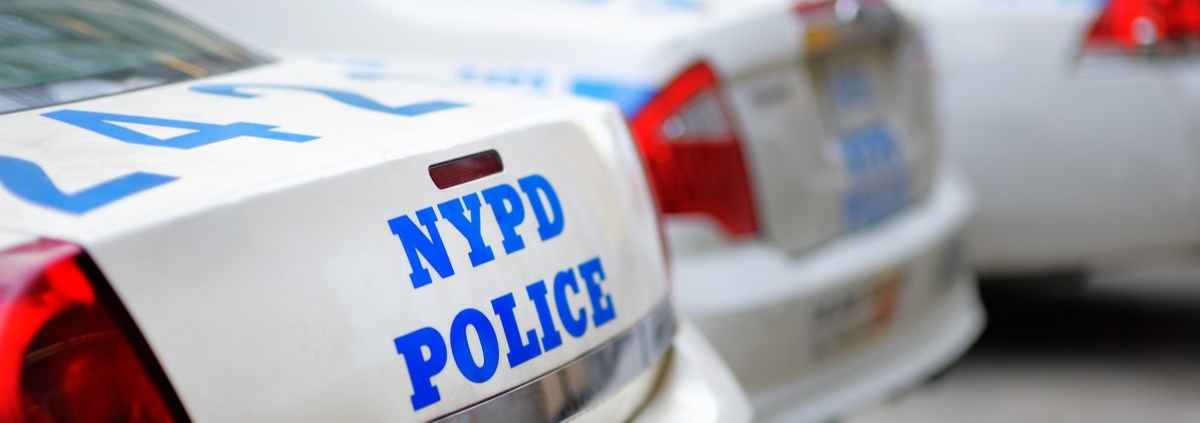
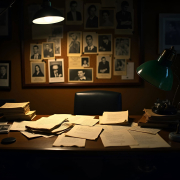
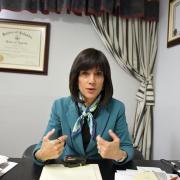
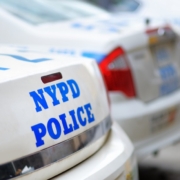
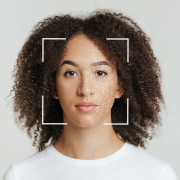
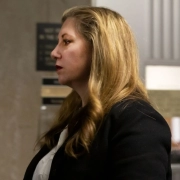
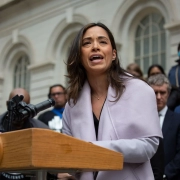


Leave a Reply
Want to join the discussion?Feel free to contribute!